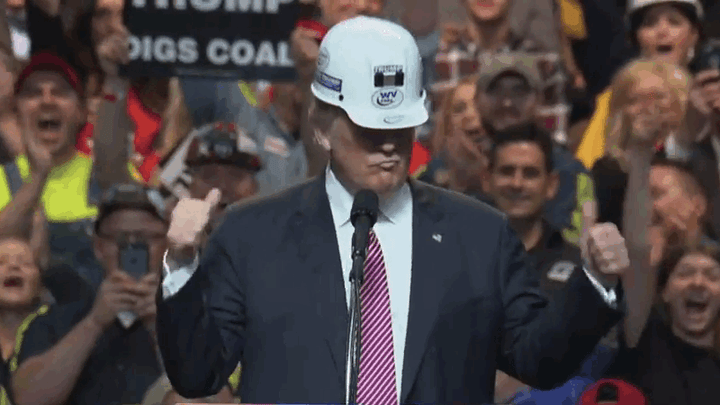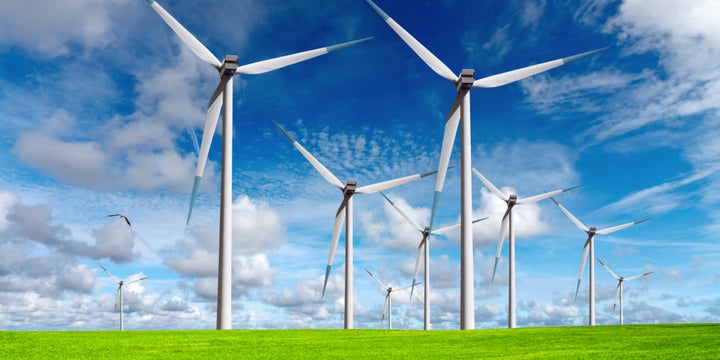
According to the acclaimed online astrologists of our time, the arrival of April is joined by four planets in retrograde: Venus, Saturn, Mercury, and Pluto. But this list of masses currently dampening everyone’s mood isn’t a comprehensive one. It would be rude to omit our current president, who, through his attempt to bring our country back to the “good old days,” has won the title of the most backwards celestial body in our solar system.
Astrology defines retrograde as the orbit of a celestial body whose spin runs counter to that of the unit it circles. American politics defines retrograde as exactly what Trump is doing – running counter to his country’s needs with his recent dismantling of the Obama administration’s climate change efforts.
Last week, Trump signed an executive order directing the Environmental Protection Agency to begin withdrawing from his predecessor’s Clean Power Plan. The purpose of this decision was to roll back environmental regulations that led to the shutdown of many coal-fired power plants, and to bring back the associated blue-collar jobs. As he said in no uncertain terms, this is “a new era in American energy!”
Flanked by grinning coal miners, Trump did the legislative equivalent of performing CPR on a mummy. Because coal is nearly dead. And it has been dying for decades. Between lessening demand when pitted against cheap natural gas, automation from machines and explosives, and the growing popularity of renewables, bringing back the industry is more a romantic delusion than a feasible goal. Robert Murray, a prominent independent operator of coal mines in the United States, admitted that Trump should “temper his expectations” about the coal industry, and that employment “can’t be brought back to where it was before the election of Barack Obama.”
“By trying to breathe life into a sector that barely has functioning lungs, the president is forgoing... innovation and crucial economic growth...”
Yet even if the jobs he wants revived still existed, Trump is about to encounter another beast of a problem: by trying to breathe life into a sector that barely has functioning lungs, the president is forgoing the innovation and crucial economic growth that comes with forging the inevitable path towards a zero-carbon society.
This recent regression in environmental policy, combined with Trump’s threats to pull our country out of the 2015 Paris Agreement, puts an economic rival of ours in a unique position. Once the subject of Obama’s insistence to follow the United States’ lead on environmental innovation, China is now pushing past us at breakneck speed.
“Trump’s rejection of regulatory action on climate change creates a vacuum in global climate leadership that China can now seize,” states Alex Wang, a UCLA law professor and environmental expert. His assertion is not hyperbole. Currently, China is overperforming on a majority of its environmental benchmarks – researchers have determined that the country is five years ahead of its goal to reach a carbon emissions peak by 2030.
The Chinese also drive both global and domestic investment in renewable energy sources. Last year they expended $32 billion in renewables-related deals overseas, and their government announced in early January that they intend to spend $360 billion on renewable power sources by 2020. Their 2016 implementation of stringent environmental inspections, their addition of over 3.5 million jobs within their clean energy industry, and their plans to slash steel, fertilizer, and aluminum production by half this upcoming year all come together to reveal how seriously China is taking its new role.
As nice as it is to think that China is acting on totally benevolent intentions, there are immense rewards to be reaped when it comes to sustainability. The International Renewable Energy Agency (IRENA) predicts that the worldwide clean energy workforce will reach 24 million by 2030 – nearly three times the current count.

Narrowing in on the United States, one report finds that solar and wind jobs are growing a dozen times as fast as the entire economy. These jobs cannot be outsourced, pay above average wages, and are found in every state. While oil and gas producers conduct layoffs, those involved with renewables thrive.
So why isn’t Donald Trump, patron saint of job creation, looking towards the long term? Why isn’t he pushing for the route that will truly Make America Great Again?
The answer lies somewhere between his desire to mollify his voter base, and him utterly lacking foresight. Change is understandably terrifying to an industry as deeply rooted in the American culture and economy as coal once was, and it is much easier to stick a band-aid over a bleeding wound than it is to prepare for surgery.
Unfortunately, the end of April will only bring our planets back into alignment. Trump, on the other hand, is going to take more persuasion. But the sooner he realizes that the American Dream has always been a steep climb towards the unknown, the sooner we can take our rightful place at the forefront of environmental innovation and job growth.
